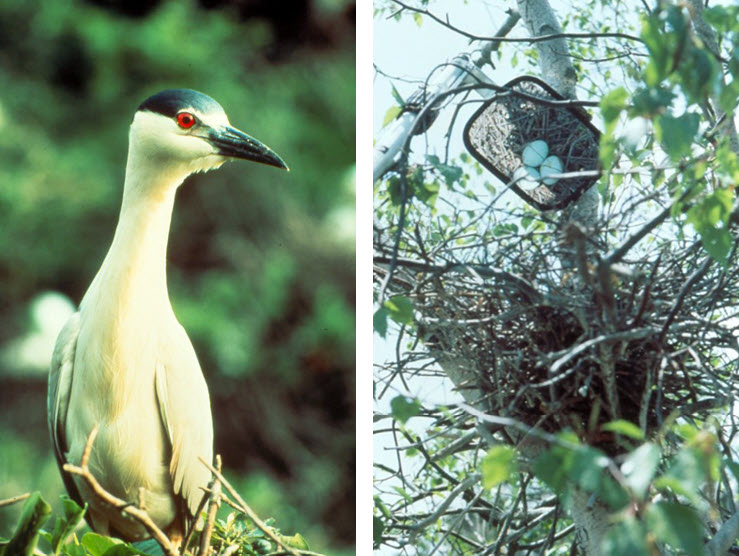Katharine C. Parsons

Left: Black-crowned Night-Heron. Photograph by John Wiese. Right: Checking heron nest contents with extensible pole and mirror. Photograph by Dave Twichell.
Introduction: Colonies of Birds have Disappeared
One hundred years ago, Alfred O. Gross published a detailed account of a Black-crowned Night-Heron (Nycticorax nycticorax) colony on Sandy Neck, Barnstable County, Massachusetts (Gross 1923). Bent (1926) reported that the Sandy Neck colony, which extended a half mile in length and one-eighth mile wide, had existed since at least the early 1800s and was—at 2,536 nests—the largest in North America. Griscom and Snyder (1955) reported “vast colonies at Plum Island, Ipswich, Barnstable Neck (Sandy Neck), and Hyannis” in the early decades of the twentieth century. This extraordinary abundance of birds evokes the legendary richness of wildlife in North America prior to exponential growth of the human population that took place in the nineteenth century (United States Census Bureau).
To view the rest of the article you'll need to
subscribe. Bird Observer publishes original articles on birding locations, on avian populations and natural history, on regional rarities, field notes, field records, photographs, and art work.